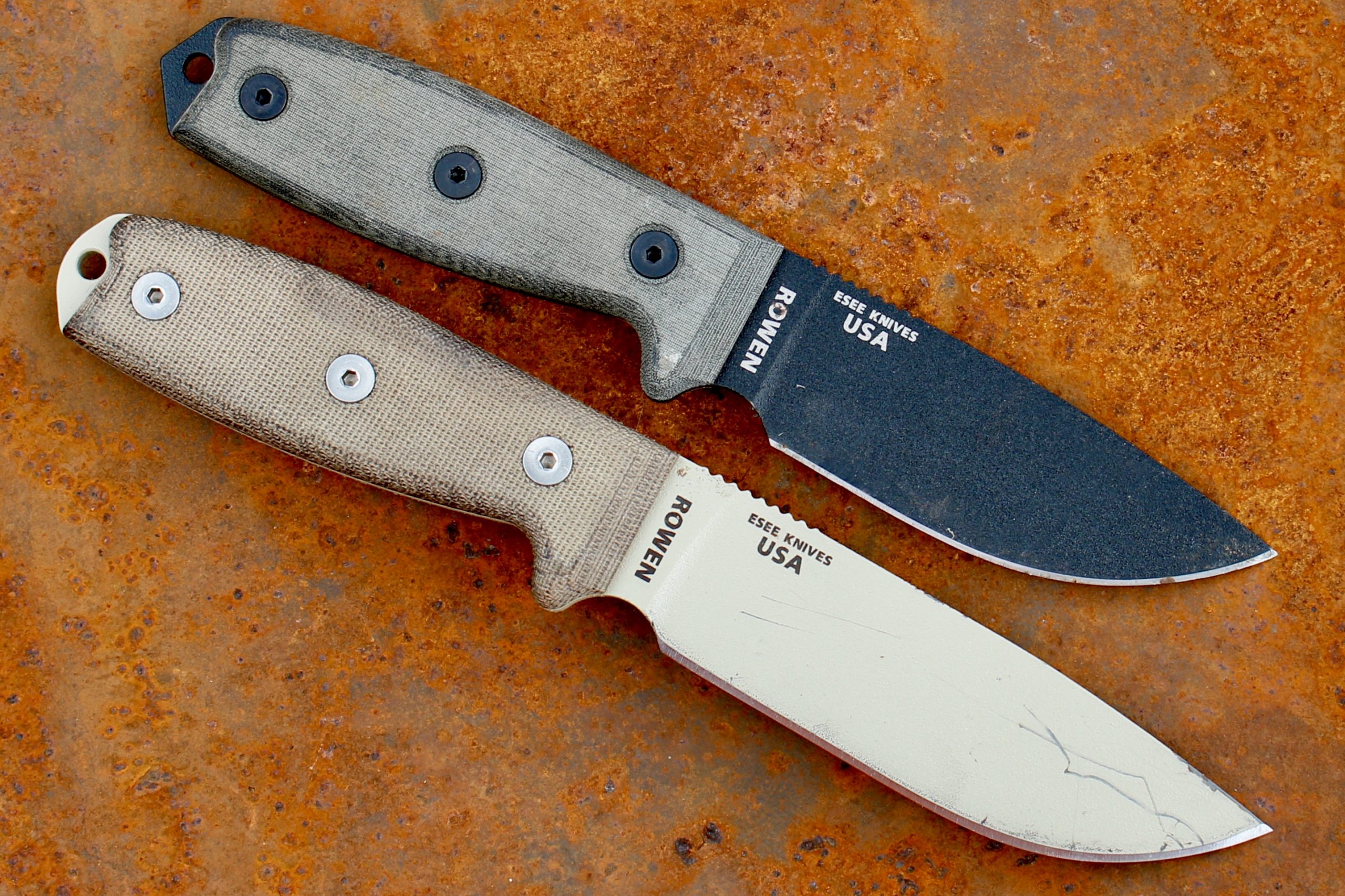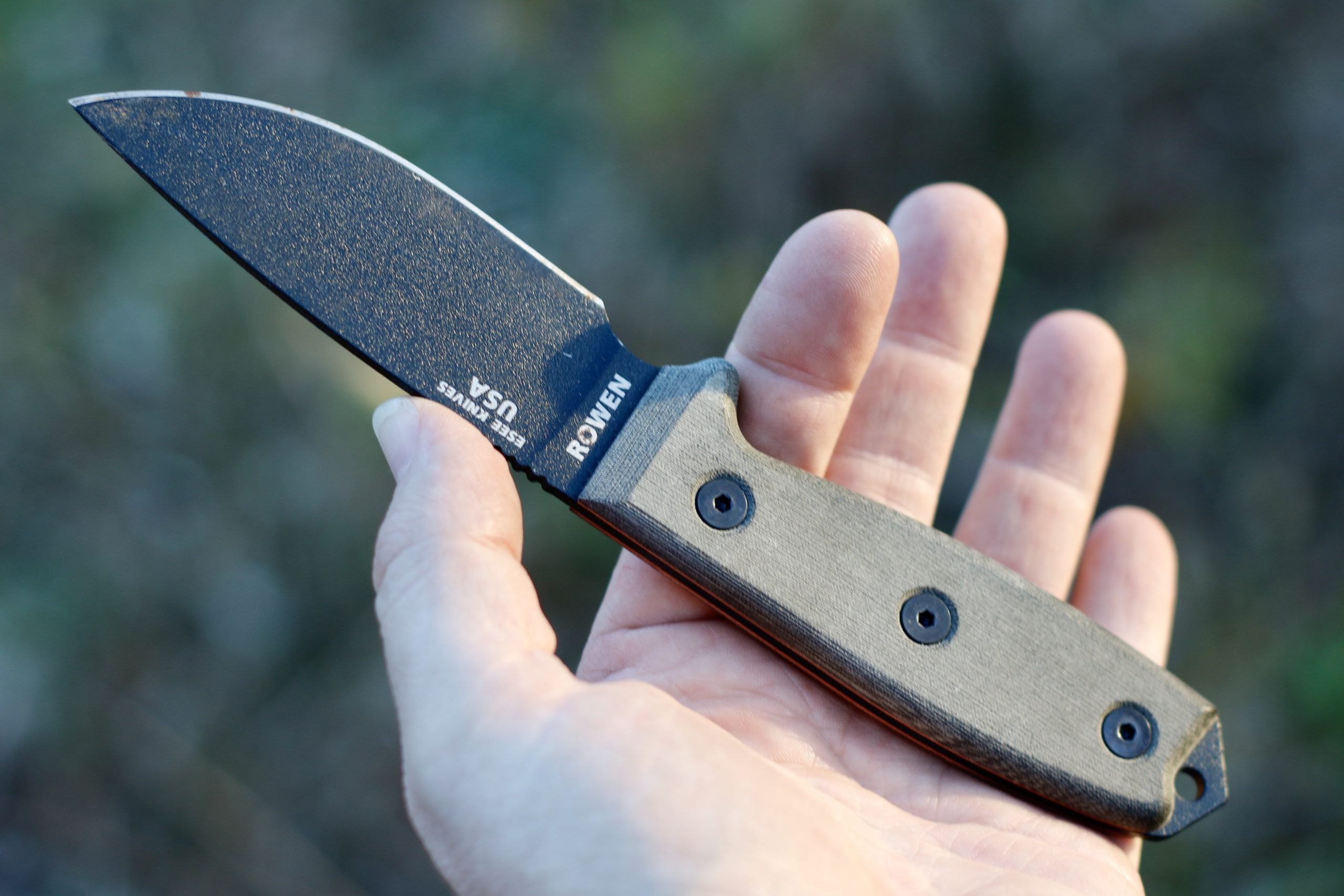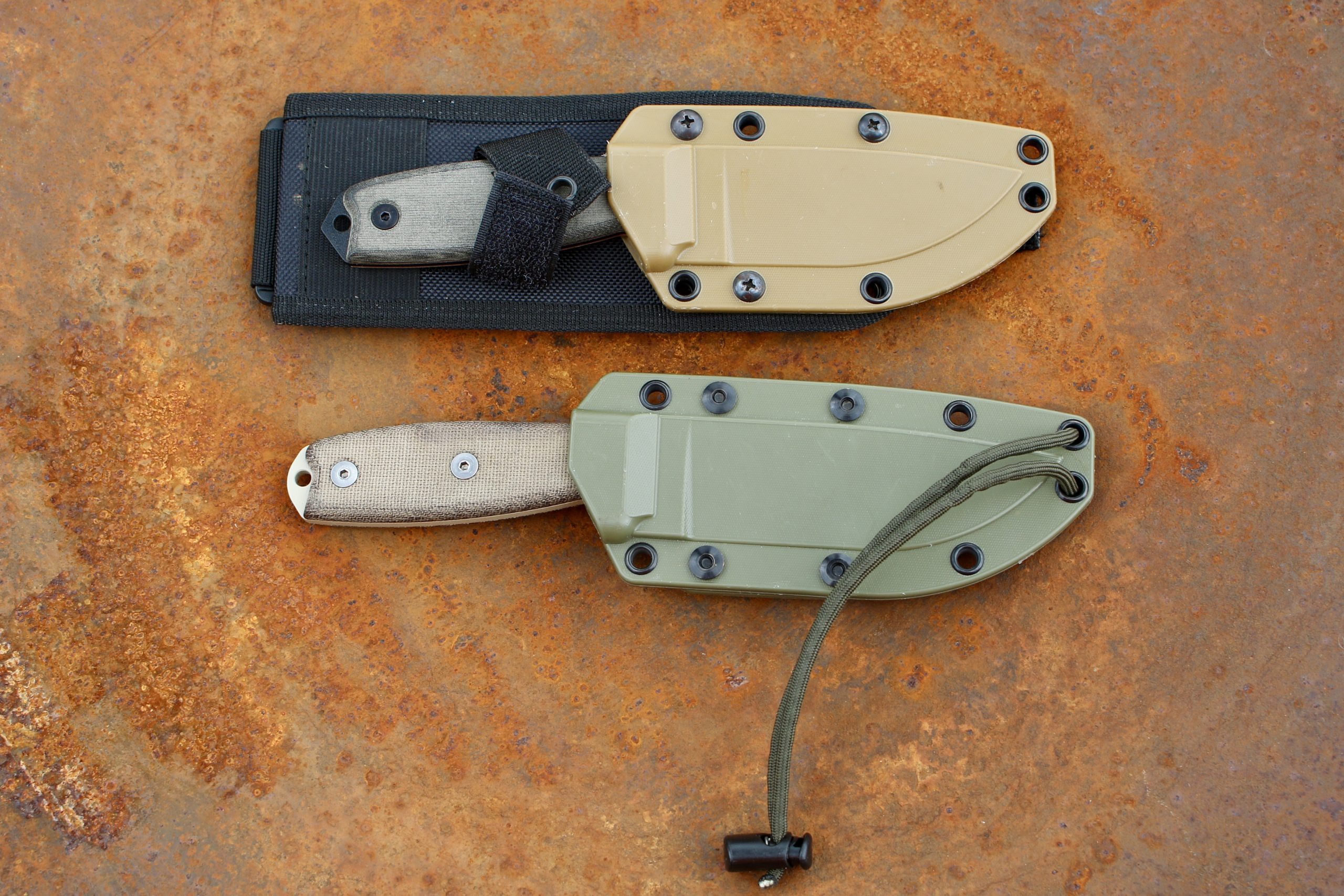ESEE’s knives aren’t gratuitous. It is with that in mind that I’d like to revisit one of my favorite arguments from the knife world—how much knife do you actually need? The answer, no doubt, is built on opinion.

I’m with the team from ESEE, though, in that I think there’s an argument to be made for a smaller, do-it-all blade that can go anywhere and stand up to just about anything. And here are two contenders for that humble crown—the ESEE 3 and 4 (a three-inch blade and four-inch blade, respectively).

The ESEE Survival Design
Both are designed to tackle basic survival skills by the Randall Adventure Training team.
The small knives are easier to carry, for obvious reasons. And they’re less likely to stir negative emotion. There’s no connotation with the cliche fighting knife (which almost always has a blade of at least seven inches in length—the distance needed, the old argument goes, to reach vital organs on a human).

The smaller knives, too, weigh much less than their bigger, fatter counterparts. This is a crucial component of the appeal, as a knife like this—one that doesn’t drag down your belt—will be easier to carry over long distances. If it doesn’t weigh you down, you’re far less likely to toss it by the side of a trail someplace when you decide you hate the weight.

And the smaller blades are still capable of convincing being used for self-defense. The finger groove that acts as a hilt keeps your hand from sliding forward on the blade.
No frills
ESEE keeps to the basics. The grips are micarta, and relatively flat. They are removable, which is a big plus. There’s no glue under them. And the bolts that hold them secure keep them on very tightly. There’s no play in them and they don’t require any Lock-Tite to keep them together (I’ve yet to have a problem in the years I’ve been using these).

And the radiused edge is simple. There’s no extra texture on the grips—just a solid utilitarian design that works and prevents hot spots.

Some frills
If you’d rather have scales that are more rounded, they’re available in the “3-D” models from ESEE. Some of those have G10 scales in vivid colors.

The coatings on the blades are an extra. As both of these models are built with carbon steel blades, the coatings will help prevent rusting and tarnishing. It isn’t 100% foolproof, as the image below shows. In the logo, there’s a bit of rust that crops up if I put this into the sheath wet.

Even so, the blades are easy to maintain. 1095 is the standard for these, and a great steel for field maintenance. If you’d rather step up to S35V, that’s an option, too. S35V has better corrosion properties. Those blades don’t require the powder coating.

Is there a drawback?
ESEE has a handle on this design in a way that many others can’t seem to replicate. While these aren’t Kephart’s, the classic bushcraft designs may be a close contender to a blade shape and design that could compete with the ESEE 4, particularly.

The three-inch version is a bit short for my taste. The four-inch blade is perfect. And ESEE recognizes that there are folks out there who want longer blades, so the catalog is full of knives increasing inch-by-inch.
And if I had to point to one drawback of this short version, it would be in the use of these as choppers. This isn’t going to double as a hatchet. It certainly isn’t a machete. Maybe this is the ideal knife for those who want to carry a second blade of some sort, too. There’s just not enough mass here to make deep, swinging cuts or splitting cuts.

Conclusion
There is one more attribute that is a selling point. These are made in America. The price reflects this. They’re north of $125—almost always—and some models creep over the $200 mark (depending on steel and scales).

That’s palatable, though. ESEE makes a knife that—if you care for it—will be there when you need it most.
The ESEE is, as far as I’m concerned, the GLOCK 19 of the fixed-blade world. It is a one-and-done solution that gets you out of just about any situation.

I liked the design well enough that I’ve kept these two in constant rotation for years, now. One almost always is clipped onto or into whatever kind of get-home bag I’ve got in play. The other is always on my larger backpack.

I rarely get more than a few miles from home without one or both of those bags, so they are there, where I need them. But… there’s one drawback.

ESEE’s Sheaths
I’m not a fan.

The basic boltron (or whatever it is) plastic part is super solid. I’m not a fan of the grommets, as there’s no cleaning it out. But they work.

Belt attachments, though, are not as solid. The clip–which I associate with 1980s era boot knives, is a solid-enough clip. And it will hold it on your belt. But I’d rather have a sheath that allows the knife to drop down off the belt, and one that can’t come off, under any circumstances, unless I take it off.

But the knives snap into place. And if you want to put it on a vest or a bag, you’re golden.

ESEE does sell some leather sheaths, but they’re simple designs that the knives drop into—no retention other than friction—and that makes me nervous. I actually have a wicked cut on my right thumb right now from a similar sheath and knife combo that failed when I picked it up off the floor with the handle of the knife pointing down. The knife fell out and the blade drug across my thumb and cut the shit out of me.

Sometime in the not-too-distant future, I’ll build the belt sheath I’ve always wanted for this ESEE. The knife deserves it.


